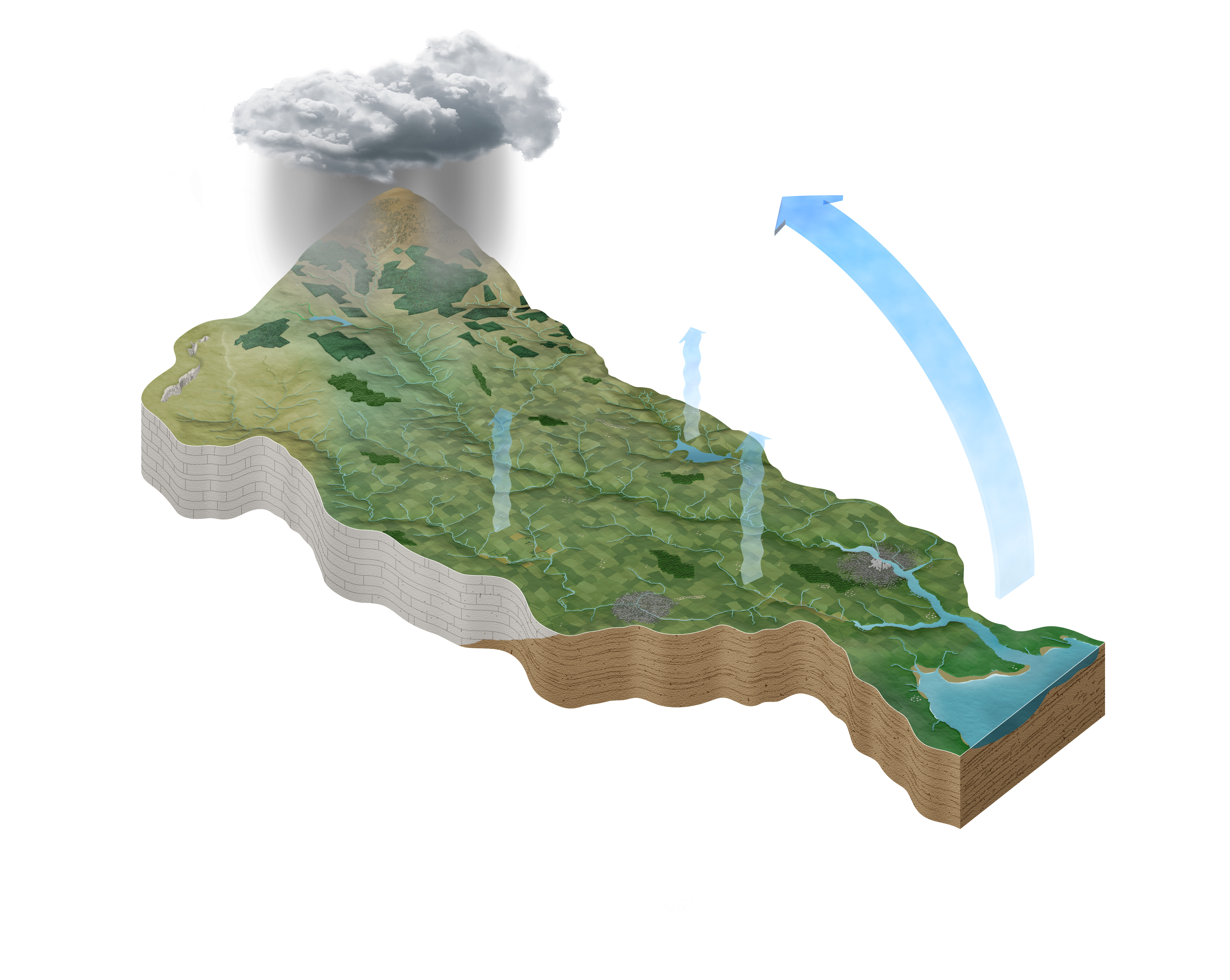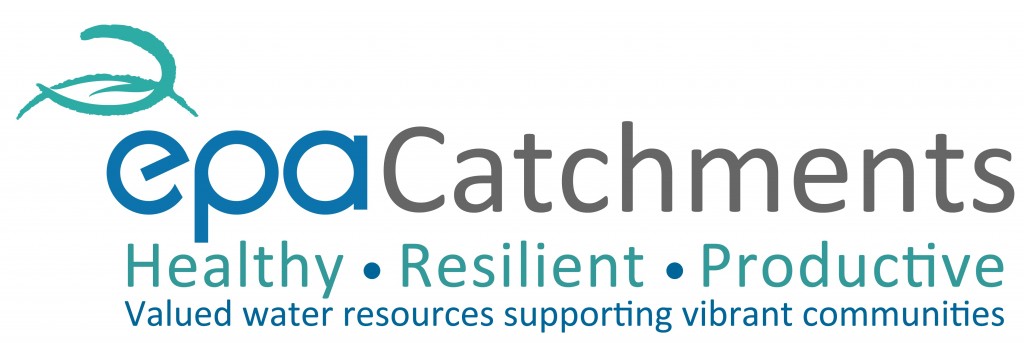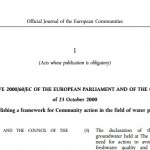Rivers trusts are charities, established by local people to look…
A beginners guide to Integrated Catchment Management and the EPA’s role
Water is a precious resource, and is essential for all life on earth. Managing our water so it can meet our current and future needs and also continue to support the ecosystems that depend on it is vital for Ireland’s future.
Effective management of water requires us to look at the pressures on our water resources at an appropriate scale – large enough that we can take account of all the relevant information, but small enough to ensure that people who live in the area can easily relate to their catchment. Experience around the world and in Ireland has shown that an integrated approach to managing individual catchments of an appropriate scale is necessary to protect and improve water resources. A catchment is an area where water is collected by the natural landscape and flows from source through river, lakes and groundwater to the sea.

Managing our catchments requires us to understand and integrate a huge range of information – how people are using the water, including drinking, agriculture, industrial use and bathing; the geography and geology of an area, looking at how all the water bodies are connected both above and below ground, how the water flows from where it falls as rain to the sea; how people use the land and water bodies and what livelihoods are supported; and possible sources of pollution, including urban waste water treatment plants, septic tanks, and runoff from farming, forestry and landfills.
Integrated catchment management—what does it involve?
- Gathering the best available information to understand the catchment – where the water comes from, how it flows through the landscape both overground and underground, and what activities in the catchment may be causing pollution.
- Looking at all the uses of water – drinking, agricultural, industrial and recreational, and also the vital ecosystems that depend on water to survive.
- Engaging local communities and involving them in decision making and management of their catchment.
- Adopting appropriate measures to ensure that activities that represent a significant threat to water resources are effectively managed.
- Applying the scientific and local knowledge of how the catchment operates to protect and improve water, providing a healthy, resilient, productive and valued resource that supports vibrant communities.
The Water Framework Directive (WFD) Explained
This piece of EU legislation has become a major driver for achieving sustainable management of water in Ireland and across the EU. Under this directive, all inland and coastal waters must reach ‘Good’ ecological status. ‘Good ecological status’ means achieving satisfactory quality water, maintaining ecosystems that can support all the species of plants, birds, fish and animals that live in these aquatic habitats.
A key part of the Water Framework Directive is Article 14, which requires all member states to genuinely engage with the people who live, work and play in a catchment. To do this, it is important to understand how local communities live in their catchments and use their water. Therefore, it is critical that local communities are involved in management and decision making related to protecting and, where necessary, improving their water resources.
Ultimately, meeting the sometimes narrow objectives of the WFD is not the aim – helping communities protect and improve a beautiful and diverse landscape with accessible healthy waterways that are productively used to support livelihoods, habitats and rich wildlife is the goal. However, the WFD is a powerful tool to help in achieving this goal.
Working Together – The EPA’s role in Integrated Catchment Management
The EPA’s Catchment Science and Management Unit will work together with local authorities, other public authorities, government agencies, and local communities in establishing effective integrated catchment management in Ireland. The main purpose of the Unit is to protect and improve water resources, while ensuring that any water body remains productive for the communities that depend on it.
A key focus of our work will be integrating existing knowledge from a range of disciplines – including hydrology, hydrogeology, ecology and hydrochemistry – with data on the pressures that are impacting on water bodies in our catchments from sources such as urban waste water treatment, septic tanks, farming, forestry and landfills. Integration of this data will provide us with an understanding of how pressures and geology are linked, enabling us to develop effective plans and measures to improve water resources that are both economically and environmentally sound. To do this, we will be undertaking WFD Characterisation, delivering a template River Basin Management Plan, and engaging with stakeholders.
The Characterisation Approach and River Basin Management Plans
Nationally, we are required to deliver the 2nd Cycle River Basin Management Plan in 2017. To do this, we must first characterise our water bodies. This allows us to then to develop mitigation measures targeted at restoring and protecting our water bodies that are at risk of not reaching good status. There are three steps in the characterisation process:
- Preliminary Risk Screening: a risk assessment of the status of water bodies, trends and the distance to thresholds based on monitoring data. This screening identifies water bodies ‘At Risk’ of not achieving good WFD status.
- Initial Characterisation: allows the ‘At Risk’ water bodies to be further investigated at a subcatchment scale (100-250 km2) and catchment scale. At this stage EPA will work with local authorities to determine which pollution sources have the greatest impact on water bodies by identifying likely significant pressures such as point sources and critical source areas for diffuse pollution.
- Further Characterisation: is targeted at the significant pressures, such as critical source areas for example, and involves undertaking investigative assessment such as catchment walks and monitoring to get an understanding of how these sources of pollution can be reduced or managed more effectively. The characterisation process informs the selection of the programme of measures. The involvement and cooperation of local communities, local authorities, and government/public bodies will be essential to ensure that the measures implemented are successful in improving our water resources.
Article by Paddy Morris, EPA Catchments Unit







